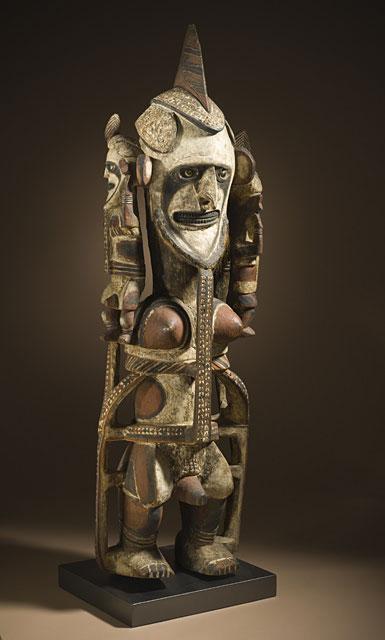Opening this weekend is the first full installation of our permanent collection of art from the Pacific Islands, the majority of which we acquired last year. Though these objects haven’t been on view before, I already feel familiar with them, thanks in part to some beautiful photographs our supervising photographer, Peter Brenner, took upon their acquisition.
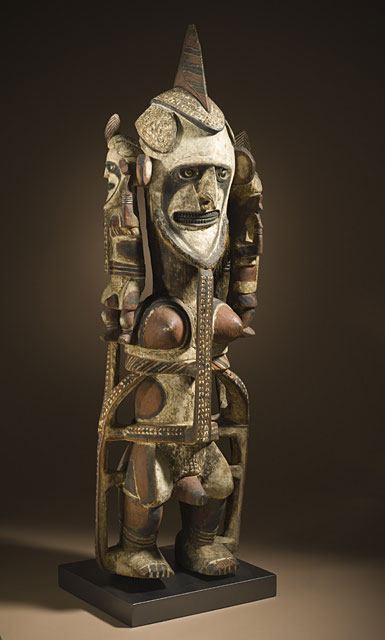
Papua New Guinea, New Ireland Province, Memorial Figure (uli, selambungin lorong type), c. 1900, Purchased with funds provided by the Eli and Edythe Broad Foundation with additional funding by Jane and Terry Semel, the David Bohnett Foundation, Camilla Chandler Frost, Gayle and Edward P. Roski and The Ahmanson Foundation
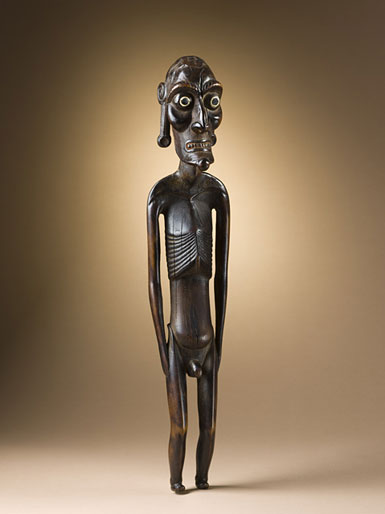
Easter Island, Rapanui Male Ancestor Figure, c. 1800, purchased with funds provided by the Eli and Edythe Broad Foundation with additional funding by Jane and Terry Semel, the David Bohnett Foundation, Camilla Chandler Frost, Gayle and Edward P. Roski and The Ahmanson Foundation
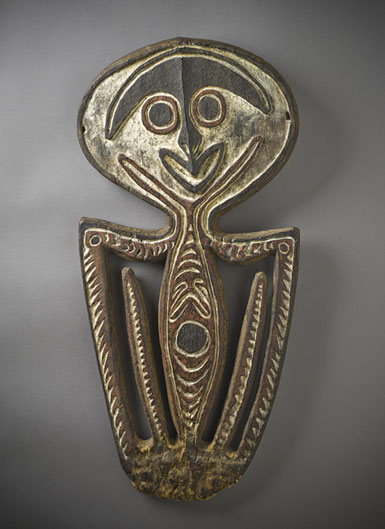
Papua New Guinea, Gulf Province, Skull Rack (agiba), c. 1900, purchased with funds provided by the Eli and Edythe Broad Foundation with additional funding by Jane and Terry Semel, the David Bohnett Foundation, Camilla Chandler Frost, Gayle and Edward P. Roski and The Ahmanson Foundation
Already feeling like I “know” these pieces—and their faces are so expressive, so animated, that they do take on real personalities—I was surprised, when I walked into the new galleries, to find myself bowled over anew. The pictures, compelling as they are, don’t do the objects justice. The detail requires that you get up close. I became captivated by the mouth of one object—a Gable Peak Figure from New Zealand—finding its teeth to be so lifelike, so downright human it was almost eerie. Go figure—when I checked the materials listed for the object, “human teeth” were on the list.
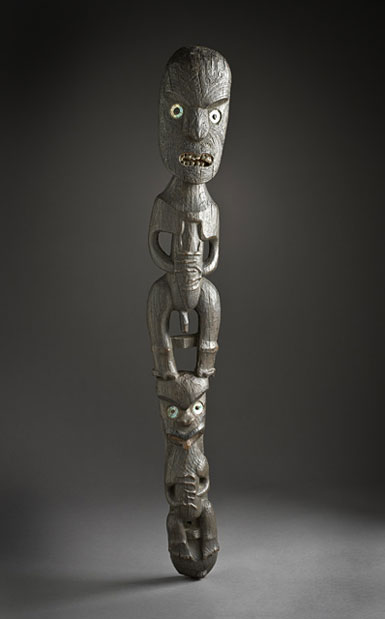
New Zealand, Gable Peak Figure, c. 1800, purchased with funds provided by the Eli and Edythe Broad Foundation with additional funding by Jane and Terry Semel, the David Bohnett Foundation, Camilla Chandler Frost, Gayle and Edward P. Roski and The Ahmanson Foundation
In fact many of the objects in this collection include the bones of humans and animals, as well as human hair, shark skin, and bird feathers. For me, a twenty-first century Angeleno, it creates a strange disconnect: on the one hand so many of these characters look like they might have walked right out of a Tim Burton film, possessing a kind of sinister charm or a dementia that inspires a chuckle rather than a shiver. But on closer inspection, the human element—both the hands that made the objects and, in some cases, the heads that are part of the objects—makes itself utterly apparent.



